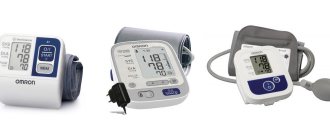Modern power plants are equipped with electronic control units that allow you to monitor the operation of all systems and receive timely information about their incorrect operation. One of the devices is an absolute pressure sensor, abbreviated as DBP. It helps ensure stable operation of the power unit, and transmits the collected data to the ECU.
In many car models equipped with a similar device, it is not difficult to find - the pressure sensor is located in the intake manifold of the engine. Here he is responsible for obtaining information about pressure changes in the intake tract. Electronics, based on the data received from it, optimizes the composition of the combustible mixture, which is sent to the combustion chamber.
Why is DBP required?
The correct operation of a small device affects the composition of the combustible mixture supplied to the pressure chamber. The absolute pressure sensor relies on the vacuum state during measurement, setting it as an absolute value. This is the basic principle of its operation.
When the information enters the electronic control unit, the optimal air density and flow rate are calculated, and after that the fuel-air mixture is prepared. The ECU transmits certain commands, based on the mass of required air obtained during the calculation, and the injectors responsible for fuel injection are adjusted.
Absolute pressure sensors have become a replacement for the flow meter, however, in some vehicle models both devices may be present at once.
How does DBP work?
By receiving readings from the absolute pressure sensor, the electronics control the volume of air mass entering through the throttle valve. This indicator is needed to generate a certain impulse command, allowing the amount of fuel to be calculated.
The device is a vacuum chamber from which air has been completely removed. The pressure readings in the inlet fitting are correlated with the level in this chamber, the readings are compared and the difference determines the outgoing command.
In this case, a number of manipulations are performed:
- The diaphragm of the device, characterized by a high degree of sensitivity, is deformed due to the pressure of the intake manifold influencing it;
- deformation is responsible for fluctuations in the resistance of surface position strain gauges. This effect is called “piezoresistive”;
- proportional to changes in resistance, the voltage also fluctuates, the output lies in the range from one to 5 V;
- the incoming voltage helps to form a command-pulse, which is transmitted to the injectors. This is how the pressure at the intake valve is determined, it is proportional to the voltage.
As a result, the power plant receives a certain dose of the fuel-air mixture.
Part 1 · Part 2 ·
Checking the vacuum in the intake manifold
Before we start checking the vacuum in the intake manifold, let's consider the operation of a 4-stroke engine.
1. Compression stroke.
The piston goes up, the working mixture is compressed. The pressure rises, the temperature rises. The valves are closed. The compression ratio in a gasoline engine is selected so that the temperature at the end of the compression stroke does not exceed the auto-ignition temperature of the working mixture. The approximate temperature is 300-400 degrees Celsius. In a diesel engine, it is not the working mixture that is compressed, but clean air. The compression ratio here is selected in such a way that the temperature at the end of the compression stroke exceeds the auto-ignition temperature of the fuel. After which it is injected and self-ignition begins.
The approximate temperature is about 700 degrees Celsius.
2. Working stroke.
The mixture ignited.
The temperature rises, but since combustion occurs in a closed volume, the pressure also rises. The burning speed is about 20-40 m/sec (depending on the quality of the mixture). Therefore, ignition must occur earlier than TDC (top dead center) - the so-called ignition timing (for gasoline engines) or injection timing (for diesel engines). Typically this angle is about 10 degrees BTDC. In this case, the peak of maximum pressure occurs (due to the finite combustion time of the mixture) 10-12 degrees after TDC. This is done to prevent overload of the cylinder-piston group and to protect against detonation. The pressure P in the combustion chamber creates a force F on the piston. F=P*S p
where Sp is the area of the piston The work received is equal to:
A = F * L
where A is the work received F is the force acting on the piston L is the movement of the piston So, the work received on the power stroke is equal to:
A= P*L* S p
As the volume increases (the piston moves down), the pressure drops. The dependence of the resulting work acquires an integral dependence on the movement of the piston, but the calculation of this dependence is beyond the scope of this article. As you can see, the greater the pressure in the cylinder, the more mechanical work we get with the same amount of fuel burned. Highly boosted engines have more power (and therefore efficiency) than low-boosted ones.
Diesel engines are superior to gasoline engines in these parameters due to a higher compression ratio and correspondingly higher pressures.
3.Exhaust stroke (purge)
The exhaust valve opens, the piston moves upward, pushing out the exhaust gases. They exit through a restricted opening, so the pressure on the exhaust stroke exceeds atmospheric pressure. Resistance at the outlet is created by: a limited opening in the valves, the presence of exhaust tract elements.
This creates back pressure against the movement of the piston and part of the energy stored in the flywheel is spent on overcoming this back pressure.
4. Intake stroke
The intake valve is open, the piston moves down. Fresh mixture enters the cylinder through the limited cross-section of the intake valve and at idle (idle) also through the closed throttle valve. A vacuum is created (pressure below atmospheric). As the piston moves downward, this creates a force that prevents the piston from moving.
Another part of the energy stored in the flywheel is used to overcome this force.
The compression stroke begins again. The piston moves upward, compressing the mixture. The energy required for this is again taken from the rotational energy of the flywheel stored during the power stroke. Thus, the energy balance is disappointing: we get mechanical work in only one cycle. In the other three we waste this work.
Ways to increase the work received.
There is only one way - increasing the pressure in the cylinder.
When it increases, we get more work, but we risk detonation. Therefore, the compression ratio and ignition (injection) angle are limited. Diesel fuel is more resistant to detonation, so diesel engines are able to operate at high pressures (obtain more mechanical work with equal fuel consumption) Methods for minimizing losses. 1. Release stroke.
It is necessary to reduce the hydrostatic resistance to the escape of gases. The use of multi-valve engines and maintenance of the exhaust tract can partially solve this problem.
2. Intake stroke.
A reduction in hydrostatic resistance can be achieved by using multi-valve engines.
3. Compression stroke.
Inevitable losses.
Let's take a closer look at what happens in the intake manifold during the idle cycle. When the intake valve is closed, the pressure in it is equal to atmospheric pressure. During the intake stroke, the mixture enters the cylinder through a restricted opening in the throttle valve. A vacuum occurs in the intake manifold (absolute pressure below atmospheric pressure). The inlet valve closes and the pressure increases again. We can see pressure pulsations. But since single-cylinder engines are quite rare, pressure (vacuum) pulsations from different cylinders overlap each other and some average pressure appears in the intake manifold, which is below atmospheric pressure (the so-called “vacuum”).
The terms “absolute pressure” and “vacuum” cause confusion even among manufacturers of devices for measuring vacuum (vacuum gauges). You often hear the phrase “negative pressure”. This is not true - there is either pressure or there is not (absolute vacuum). Pressure cannot be negative! Absolute pressure in a vacuum is zero, and atmospheric pressure is 100 kPa (100 kiloPascals). In the intake manifold at idle (throttle valve closed) is below atmospheric (i.e. below 100 kPa), but above absolute vacuum (0 kPa). Vacuum is the difference between atmospheric pressure and the actual pressure in the intake manifold.
Car manufacturers normalize the absolute pressure in the intake manifold at idle with a working engine at 20 kPa (VAZ cars - at 40 kPa). The vacuum in this case is 80 kPa (100 kPa - 20 kPa = 80 kPa). For VAZ cars, accordingly, 60 kPa (alas, the manufacturing technology does not allow obtaining a vacuum corresponding to the level of world manufacturers).
An absolute pressure of 20 kPa (a vacuum of 80 kPa) is considered the norm, but in practice, for a working engine, an absolute pressure of 30 kPa (a vacuum of 70 kPa) can be considered acceptable.
The author of this article has only come across cars with ideal absolute pressure (vacuum) a few times. A pressure of 40 kPa (vacuum of 60 kPa) is permissible only for VAZs. At a pressure of 50 kPa, serious problems occur in the engine. Factors influencing absolute pressure (vacuum) will be discussed in the next part.
Part 1 · Part 2 ·
Ryazanov Fedor
© Legion-Avtodata
Instrument location
Having figured out what DBP is, you need to determine where to look for it in the car. This type of device is used only on cars that are equipped with injection engines, especially if they also have a compressor and turbocharging system.
Often the device is located on the intake manifold; in addition, there are models where it is attached directly to the body in the engine compartment, and the inlet manifold and fitting are connected with a flexible hose.
Even if the car does not have a mass air flow sensor, DBP can be installed and perform the tasks assigned to it.
Sensor malfunction: what indicates a breakdown
Correct functioning of the device affects vehicle control and comfortable driving. Signs of a sensor malfunction include the following symptoms:
- increase in fuel consumption. Incorrect pressure data received by the electronic control unit forces a more saturated fuel mixture to be supplied, which affects fuel consumption;
- in the hot season, the exhaust is whitish;
- the dynamics of the power unit deteriorate, warming up does not improve the situation in any way;
- the exhaust smells noticeably of gasoline;
- idle speed does not decrease for a significant time;
- noises arise, the engine hums;
- gear shifting is accompanied by jerks.
Such unpleasant phenomena most often indicate a malfunction of the sensor. In this case, diagnostics is needed.
What to look for in a faulty MAP sensor?
A faulty MAP will affect the air/fuel ratio of the engine. If the composition of the mixture is not correct, then detonation combustion is possible. If detonation continues for a long time, the internal parts of the engine (such as pistons, rings) will be damaged, and this will ultimately lead to catastrophic failure. Please pay attention to these warning events:
- Rich composition: rough idling, excessive fuel consumption, black smoke, poor acceleration and a strong smell of unburned fuel (especially at idle);
- Poor composition: operation in waves, stalling, lack of power, weak acceleration, “sneezing” reverse emissions to the intake, overheating of the converter;
- Detonation and misfire;
- Malfunction lamps in the engine control system (Check Engine).
Repairing an engine is a lot more hassle than replacing a sensor, so if your engine has any of the above symptoms, have your MAP sensor diagnosed.
Diagnostic measures
How to check the absolute pressure sensor and determine that it is working:
- first, connect an adapter for a pressure gauge to the vacuum hose connecting the device and the inlet manifold;
- The power unit is allowed to idle for some time. If there is a vacuum in the manifold - readings below 529 mm, you need to make sure that there is no damage to the hose, there are no defects in the sensor diaphragm;
- Having received the data from the pressure gauge, it is disconnected and a vacuum pump is installed in its place. A rarefied state is created (55–56 mm), after which pumping stops. If the state is held for about thirty seconds, then the sensor is working properly, and the problems with the car lie in something else. Otherwise, the faulty device must be replaced.
If the device is digital, diagnostics occurs somewhat differently:
- the tester is switched to voltmeter mode, a wire installed on the output contact of the device being diagnosed is connected to it;
- the power plant starts. If the voltage is maintained at 2.5 V, then the sensor is working, but if it deviates to one side or the other, it requires replacement;
- in tachometer mode and with the vacuum hose disconnected, the positive probe is connected to the signal terminal, and the negative probe is connected to ground. If the cause of the malfunction is not in the DBP, then the tachometer will show a value of 4400–4900 rpm;
- After connecting the vacuum pump, you can determine whether there are changes in the readings obtained by the tachometer. If they are, then you should consider replacing them.
Diagnostic measures indicate whether it is worth preparing for a complete replacement or whether cleaning the sensor is sufficient.
Common MAP Trouble Codes
Below is a list of MAP sensor related codes to look for if your check engine light comes on:
- P0068: MAP/MAF - throttle position correlation;
- P0069: Manifold Absolute Pressure - Correlation with Barometric Pressure;
- P0105: MAP circuit failure;
- P0106: MAP Circuit/Barometric Pressure Range Problem/Performance Problem;
- P0107: Manifold absolute pressure/barometric pressure circuit low input;
- P0108: MAP Pressure Circuit High Input;
- P0109: MAP/barometric pressure circuit interrupted;
- P1106: MAP Circuit/Barometric Pressure Range/Performance Problem;
- P1107: Barometric Pressure Sensor Circuit Low Voltage.
Note: Sometimes other sensors or other faulty parts can cause these codes to appear. Even if your engine is experiencing the symptoms listed above and is setting one or more of the OBD-II codes listed, it is recommended that you check the MAP to ensure it is faulty.
How to clean DBP
During operation, the device gradually becomes overgrown with dirt, which reduces the sensitivity of the diaphragm. Because of this, symptoms may be observed that indicate a malfunction of the DBP. To clean it from contaminants, it is necessary to dismantle it.
Depending on the model of the car, the location of the sensor changes. If the engine is turbocharged, then there may be two of them, one of which will be located on the turbine, and the second on the intake manifold. In any case, bolts will be used for fastening - one or two, depending on the design.
To clean the sensor, you should stock up on carb cleaners or similar cleaning products. First, the housing is tidied up, and then the contacts are carefully cleaned. The most attention is paid to the O-ring and diaphragm. You need to be careful with them, the main thing is to prevent damage. It is enough to spray a certain amount of cleaning composition and then pour it out with the dirt removed.
Cleaning allows you to restore sensitivity to the sensors, and if the problem was only contamination, diagnostics will show that the sensor is in perfect order, and the engine will operate in standard mode. If the manipulations do not help, you should purchase a new replacement device.
Why do MAP sensors fail?
Like most electrical sensors, MAPs are sensitive to contamination. If a hose is used to connect the MAP, it may become clogged or leaky, which will lead to an error in sensor measurement or, in general, to the impossibility of this. In some cases, extreme vibrations from driving can loosen connections and cause external damage. Electrical connectors can also melt or crack from overheating due to their close proximity to the engine. In any of these cases the MAP must be replaced.
Where can I buy
Spare parts and other products for the car are easily available for purchase at auto stores in your city. But there is another option that has recently received significant improvements. You no longer need to wait a long time for a parcel from China: the AliExpress online store now offers the opportunity to ship from transshipment warehouses located in various countries. For example, when ordering, you can specify the “Delivery from the Russian Federation” option.
Follow the links and choose:
| Intake air pressure sensor 4Bar for Renault, Peugeot, KIA, Hyundai, Citroen | GKFLY car jump starter, external battery | Car charger, 2 USB ports, 5 V, 3.1 A |
| EANOP HUD car display, windshield projector | Baseus car humidifier | Car automatic parking sensors with 4 sensors |










